伝統を大切に ~Caring for Tradition~
種蒔きから染色まで ~Cultivating Indigo, From Seed to Dye~

『天然灰汁発酵建』
日本で約600年受け継がれる自然物だけを使用した日本だけの伝統技法。
世界では類を見ない日本の宝。
Hi-COLOR handworksでは染料になる藍は全て自給しています。
醗酵にこだわった物づくり。
未来に繋げていくためにも。
『Dye Creation Through Natural Lye Fermentation』
This traditional Japanese method uses only natural materials and has been handed down over generations for approximately 600 years.
A Japanese treasure, unique the world over.
Hi-COLOR handworksでは染料になる藍は全て自給しています。
All of Hi-COLOR handworks’ indigo dye is made from our personally cultivated indigo crops.
Our craftsmanship is fastidious about fermentation, and focused on connecting to the future.
循環型農業を目指して ~Aiming for Recycling-Oriented Agriculture~
藍染染料ができるまで ~How We Produce Indigo Dye~
冬の間は土づくり。
山に入り落ち葉を頂き
無農薬米農家さんからはもみ殻、米ぬかを分けて頂き
枯草、落ち葉と共に畑にすきこみ微生物を増やします。
Preparing the Soil in Winter
Fallen leaves collected from the mountains,
rice husks and rice bran from pesticide-free farmers,
these, along with dry grass and other fallen leaves, we plow into our fields, increasing the number of microorganisms.
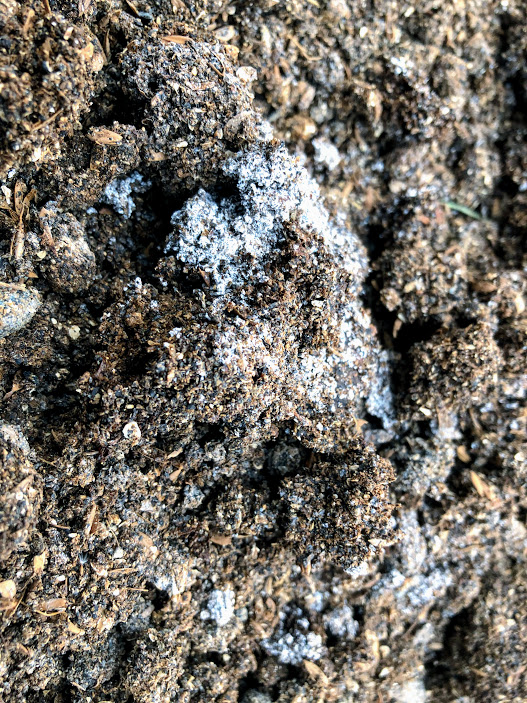
土壌環境を醗酵状態に持っていくために醗酵堆肥を作ります。
もみ殻に米ぬか、牡蠣殻石灰、油かすや藍の茎等々。
自作の醗酵液と混ぜこんで切り返しを続けながら熟成させます。
肥料も微生物を増やすために醗酵肥料を作ります。
米ぬか、油粕、牡蠣殻石灰と自作の醗酵液を混ぜこみ袋に詰め空気を抜いて熟成させます。
春には微生物たっぷりの堆肥と肥料が完成します。
無農薬栽培にこだわりたいので虫が出やすい醗酵動物糞は使わずに植物性で作ります。
To bring the soil environment to a fermenting state, we make fermented compost from a variety of natural waste materials like rice husks, the lime of oyster shells, oil-cake fertilizer, and indigo plant stalks.
Mixed with our handmade fermentation liquid, our compost is allowed to ferment while regularly being turned over and mixed.
We also make fermented fertilizer, in order to further increase the number of microorganisms.
The rice bran, oil-cake fertilizer, and the lime of oyster shells are mixed in bags with our handmade fermentation liquid and then aired out to mature.
By springtime, our compost and fertilizer are both teeming with helpful microorganisms.
We are focused on maintaining our organic farming practices, so we do not use fermented animal dung as it tends to give rise to insects. We instead use vegetable matter.
春になり ~Springtime~
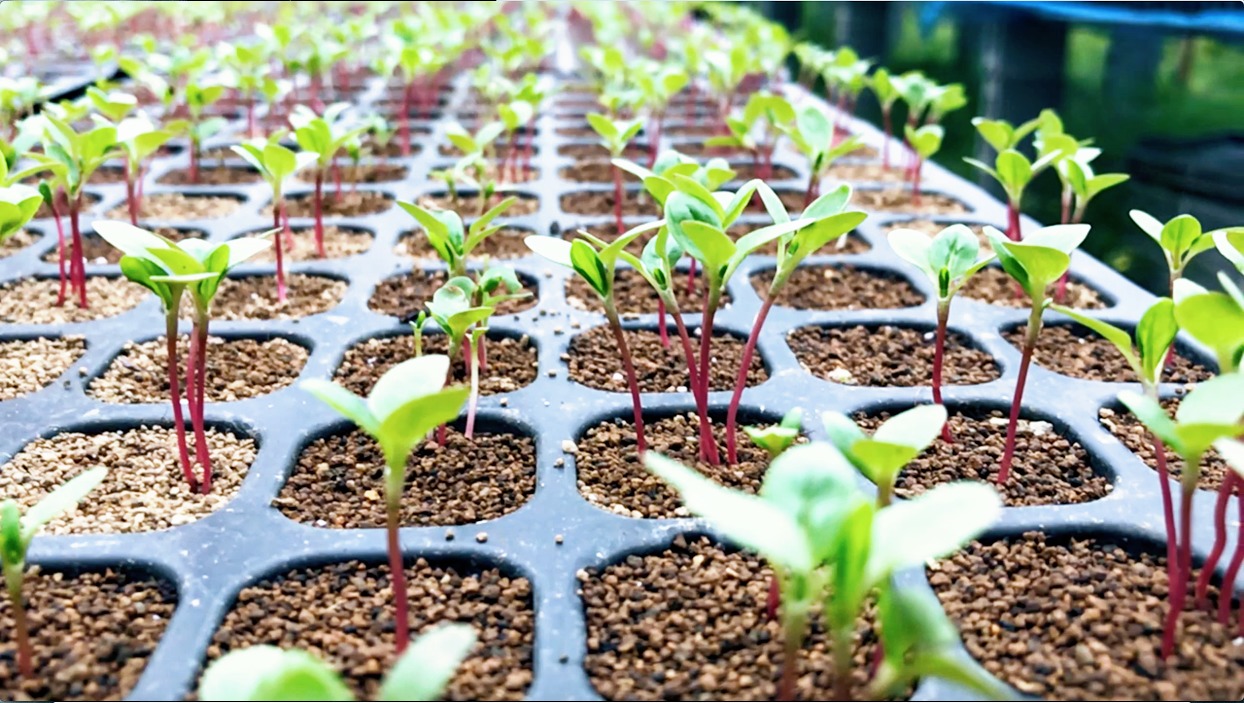
3月後半
満月前後一週間で種蒔きをします。
ビニールハウスで約40日間の育苗期間を経て4月後半に畑に定植をします。
無農薬栽培なので虫も寄ってきます。肥料の量に気を付けながら育てていきます。
Late March
We sow our seeds the week around the full moon.
Seedlings are cultivated in our greenhouse for about 40 days before being planted in our fields in late April.
Since we are fully organic, the bugs flock to our fields. We tend carefully to our seedlings, paying close attention to how much fertilizer they have.
夏になり ~Summertime~
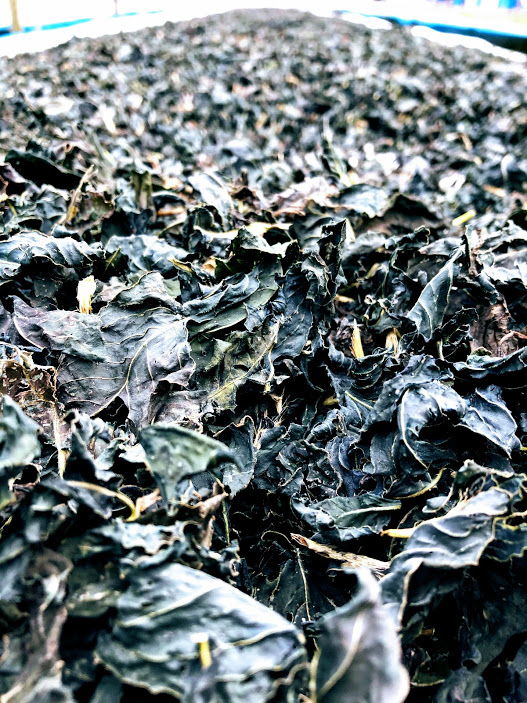
繰り返し除草し梅雨が明けた頃には1回目の収穫を迎えます。
刈り取った葉を機械にかけ細かくして葉と茎を分けます。
天日で乾燥し葉だけを集め保存します。
再び追肥、除草を繰り返し9月に2度目の収穫を迎えます。
We weed the fields regularly, and at the beginning of rainy season, we gather our first harvest.
We pass our harvested leaves through a machine to separate them from their stems.
The leaves are then sun-dried and preserved.
Again, we add extra fertilizer and weed the field, and then harvest for the second time in September.
秋になり ~Autumn~
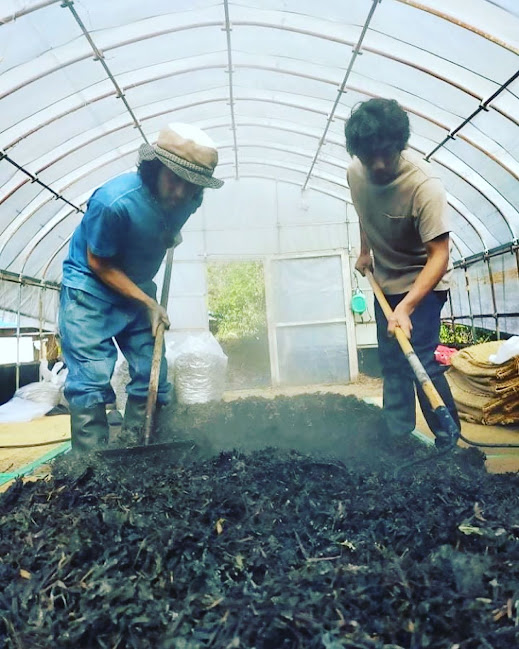
2回目の収穫を終えると残った株からは花が咲きだし翌年の種を付けます。
秋の後半からは染料の源、蒅作り(スクモ)が始まります。
乾燥した葉に水を打ち切り返しを20回ほど繰り返し約100日かけて仕上げます。
Once the second harvest is finished, the leftover stalks are left to flower and go to seed for next year.
From late autumn, we begin making our fermented indigo dye, called sukumo.
The dried leaves are splashed with water and raked. This process is repeated 20 times over approximately 100 days.
藍を建てる ~Building the Indigo~
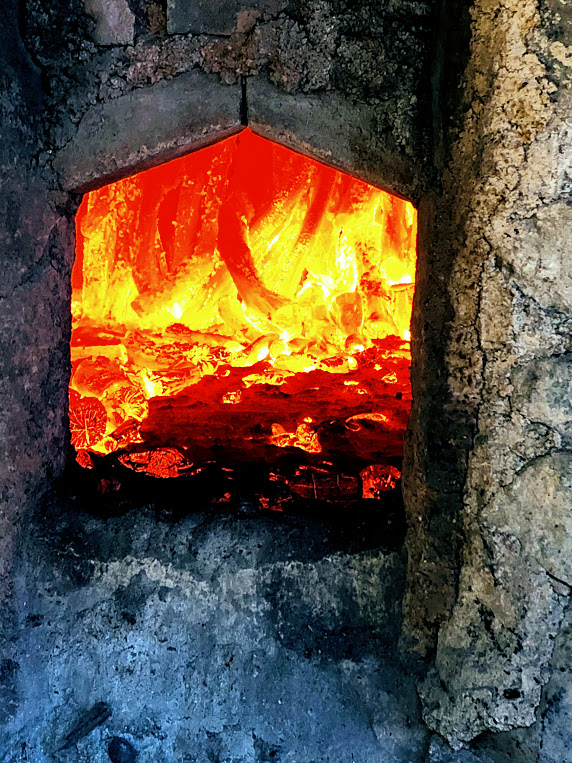
藍の染液を作ることを「建てる」と言います。
蒅の状態では青の色素(インジゴ)がまだ水に溶けていないため、アルカリ性水溶液の中で微生物の働きにより還元させ染液を作ります。
そこで大事になるのが灰汁です。
樫などの堅い木の灰を水に浸した上澄み液を使用します。
杉や檜などの針葉樹ではうまく藍が建たないのです。
Hi-COLOR handworksでは炭焼きの際に出る樫100%の灰を使用しています。
水はミネラルを豊富に含んだ海部川の水を使用しています。
The process of making the indigo dyeing liquid is called “building.”
While in its sukumo state, the blue pigment (indigo) does not dissolve in water. To create the dye, the sukumo is submerged in alkaline water, which allows a chemical reaction to take place with the help of microorganisms.
The lye becomes important to the process at this point.
The ash of hardwoods like evergreen oak is steeped in water to make a supernatant liquid.
Coniferous trees like cedar and cypress do not “build” the indigo well.
Hi-COLOR handworks uses 100% evergreen oak ash, made through burning oak charcoal.
The water in our mixture is from the Kaifu River, rich in minerals.
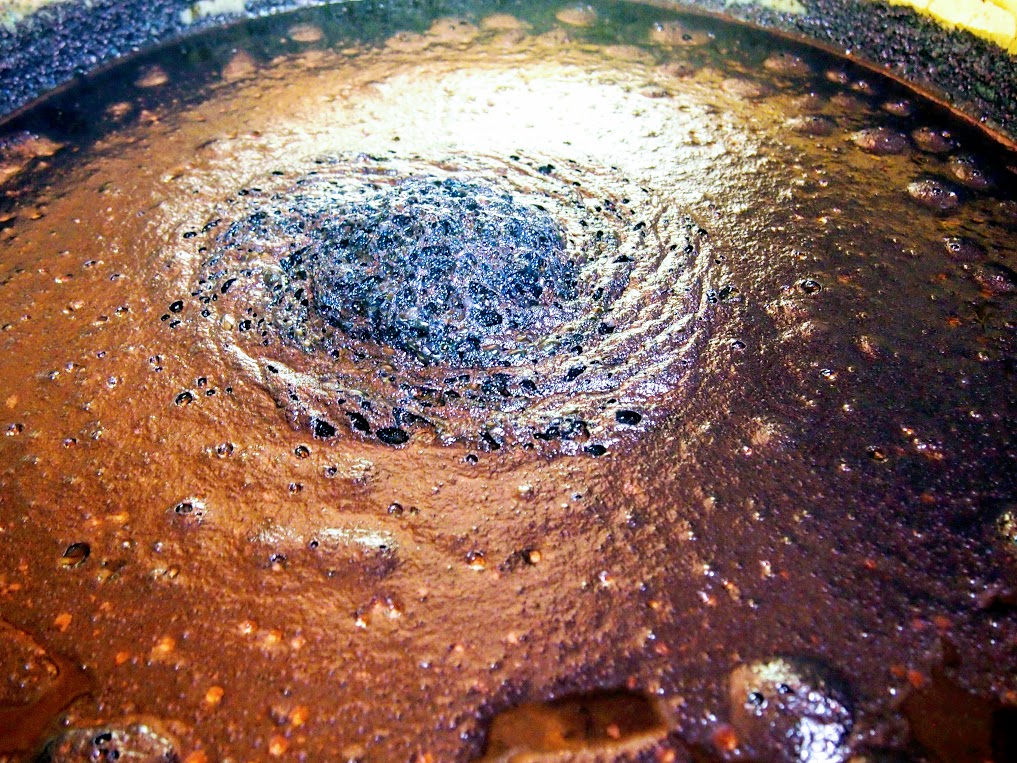
藍甕に蒅、灰汁、貝灰(赤貝の殻を焼き粉末にしたもの)、小麦ふすまを入れます。
2~3日で表面に赤紫の膜が張ってきたら灰汁を少しづつ足していき染液の量を嵩上げしていきます。
順調に醗酵が進めば7~10日間で完成です。
藍染は蒅、甕の中と2度醗酵させます。
私達は醗酵した服、生きてる服と表現しています。
Into the indigo vats go the sukumo dye, the lye, shell ashes (made from burning and pulverizing ark shells), and wheat bran.
In about 2-3 days, when the surface forms a red-purple film, we add lye a little at a time to increase the amount of dye liquid.
If the fermentation goes smoothly, in 7-10 days, the dye is ready.
The indigo dye has now been fermented twice, once as sukumo, and then once more, now, in the vats.
This is why we call our clothes “living clothes.”
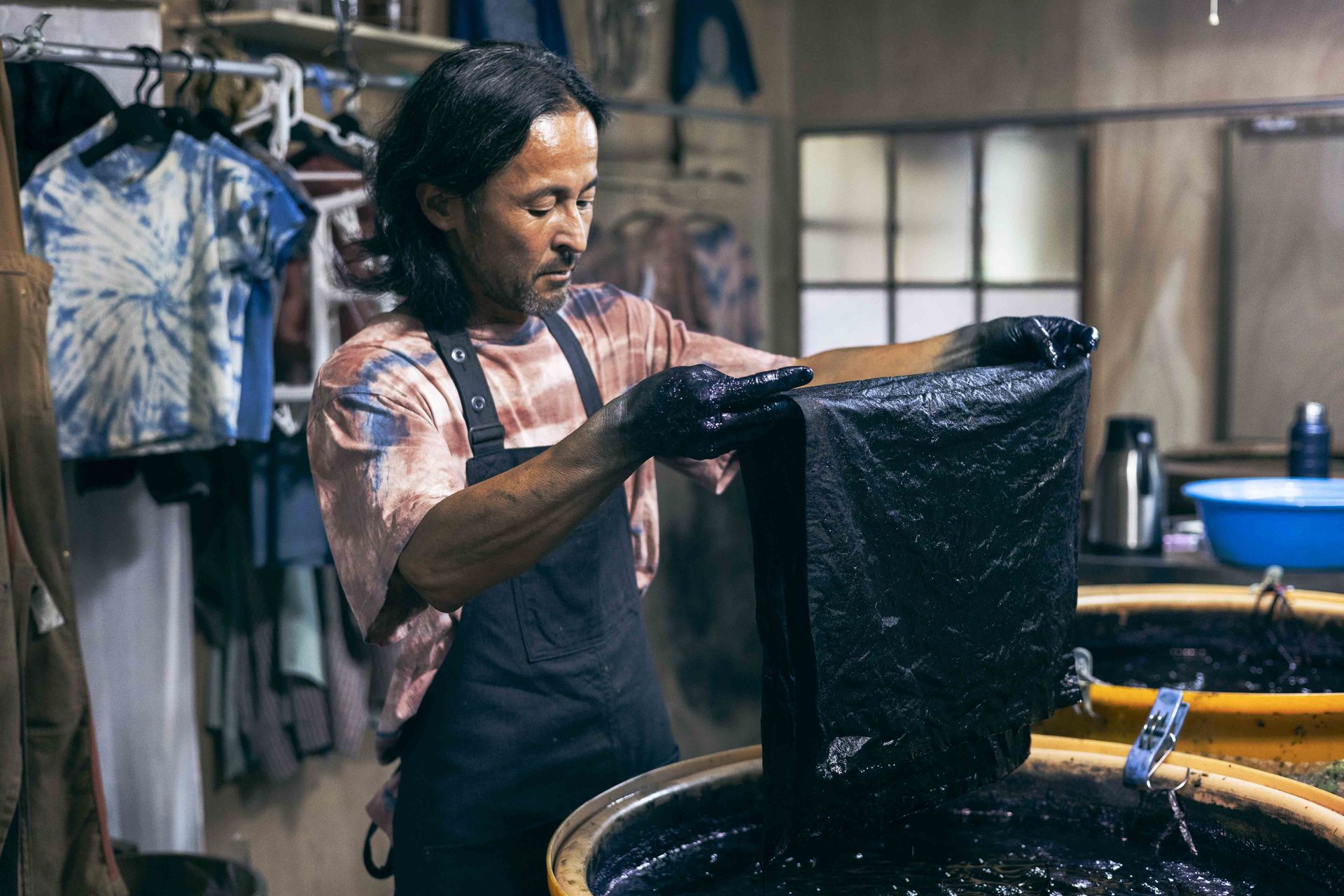

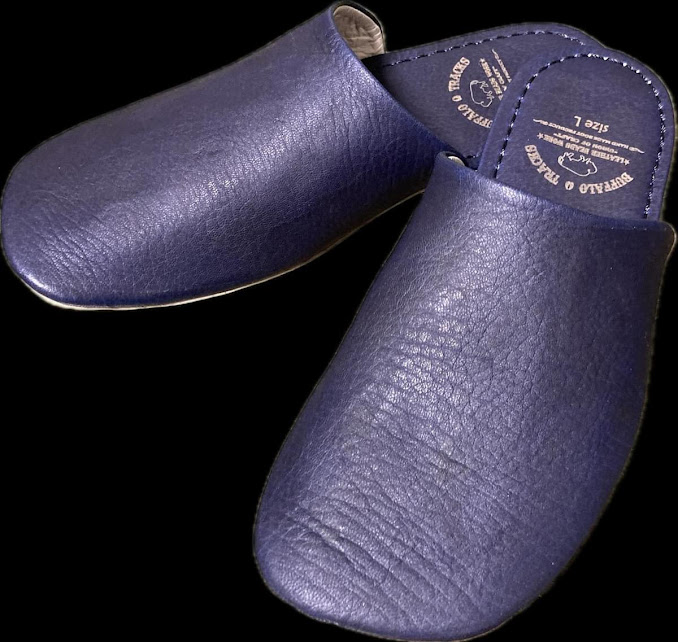
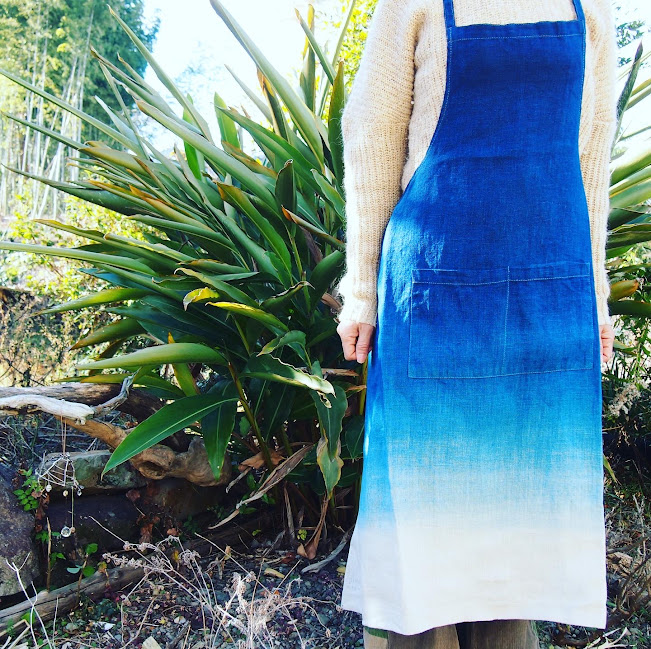
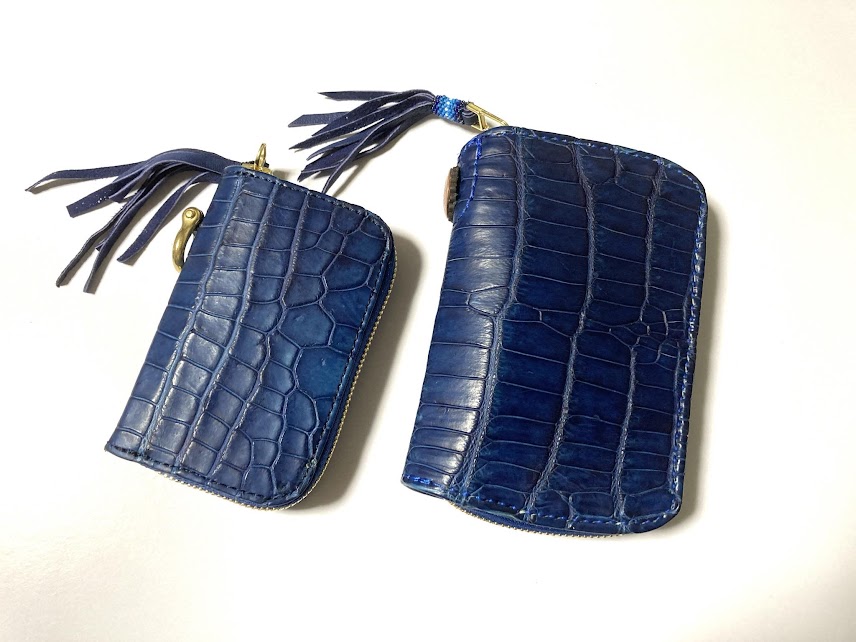
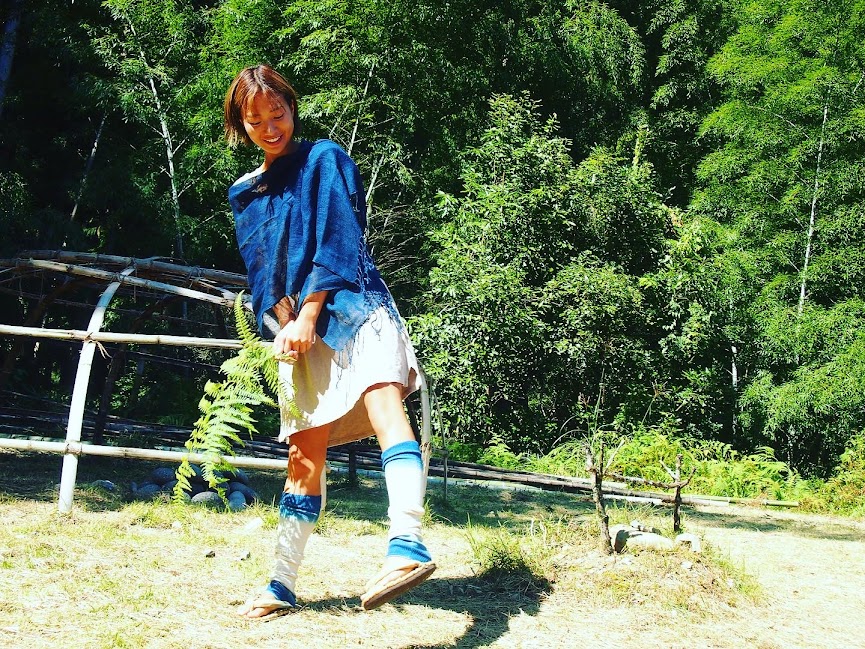
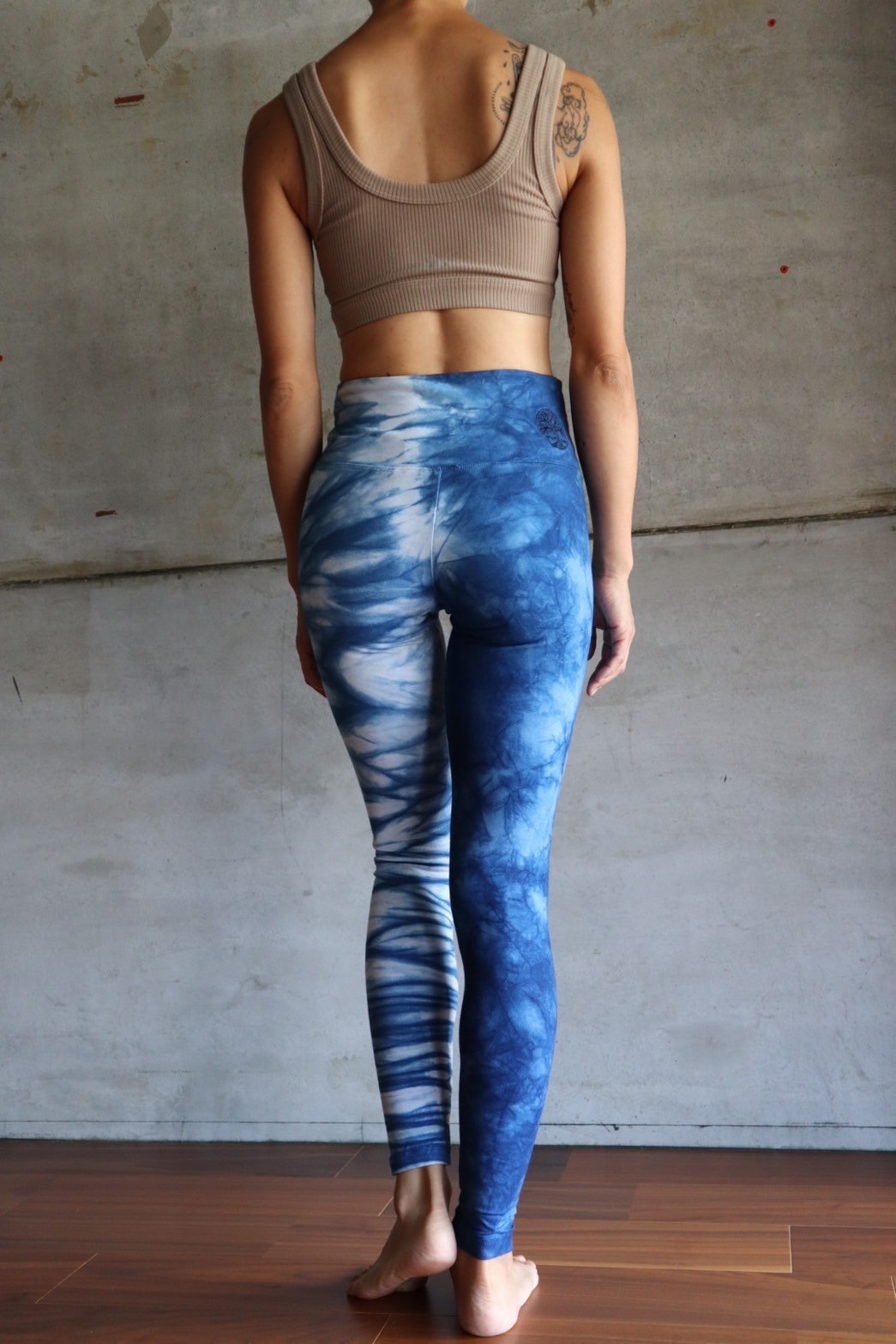
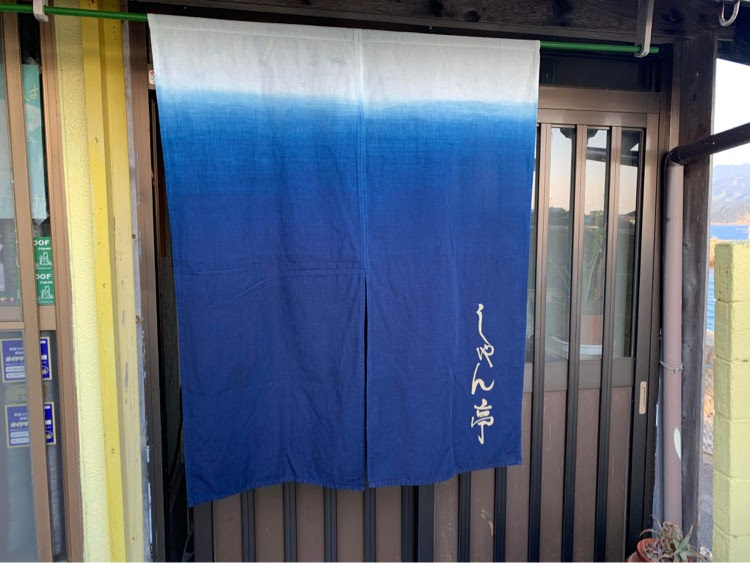

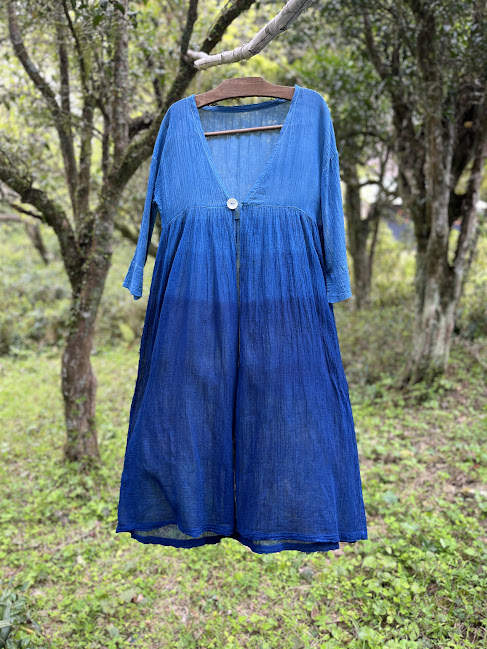
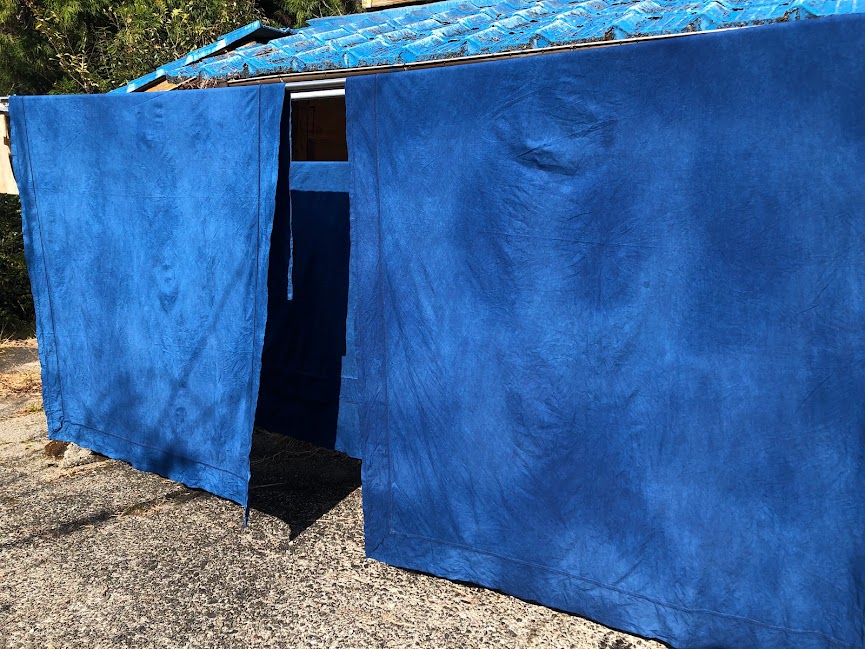
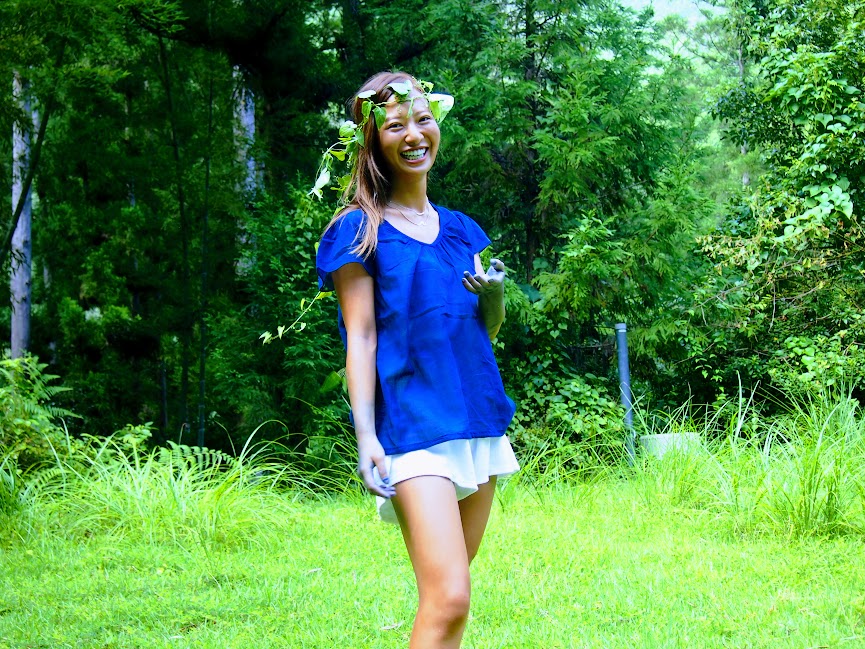
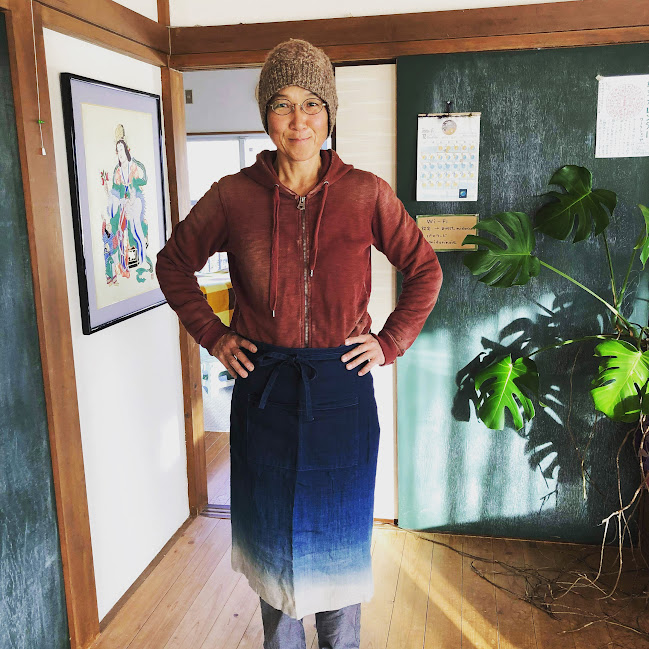
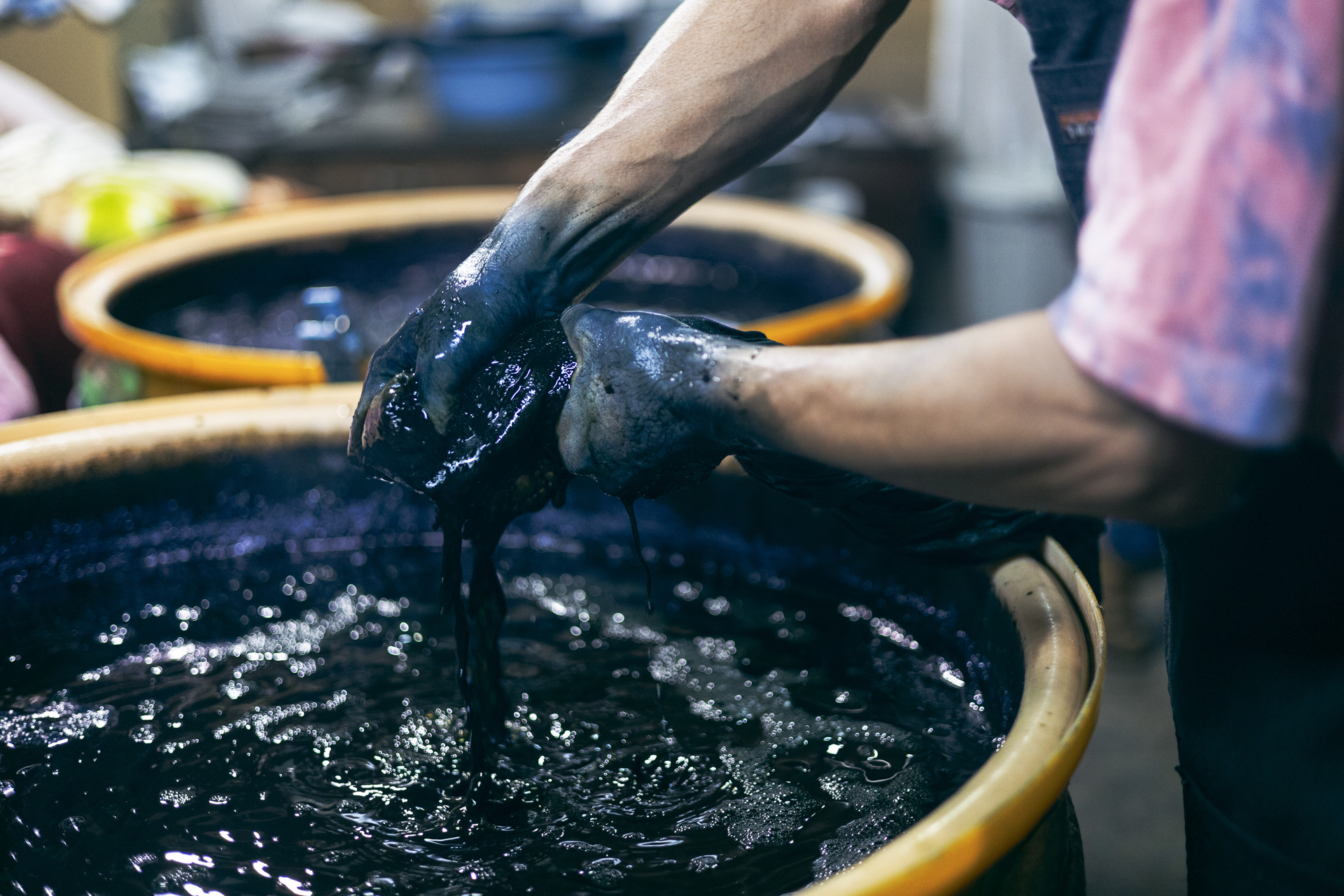
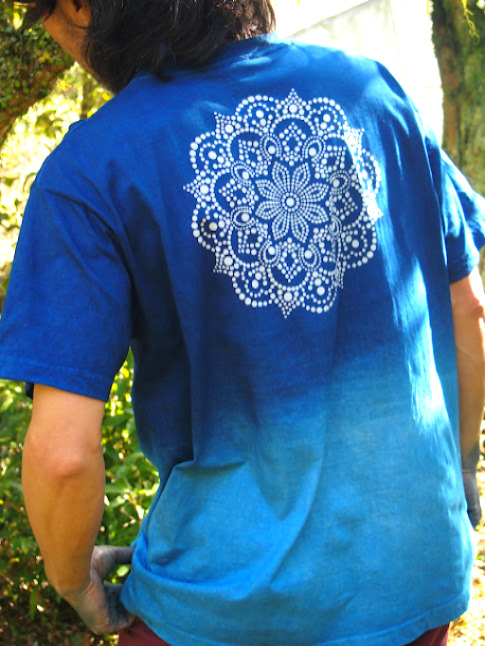
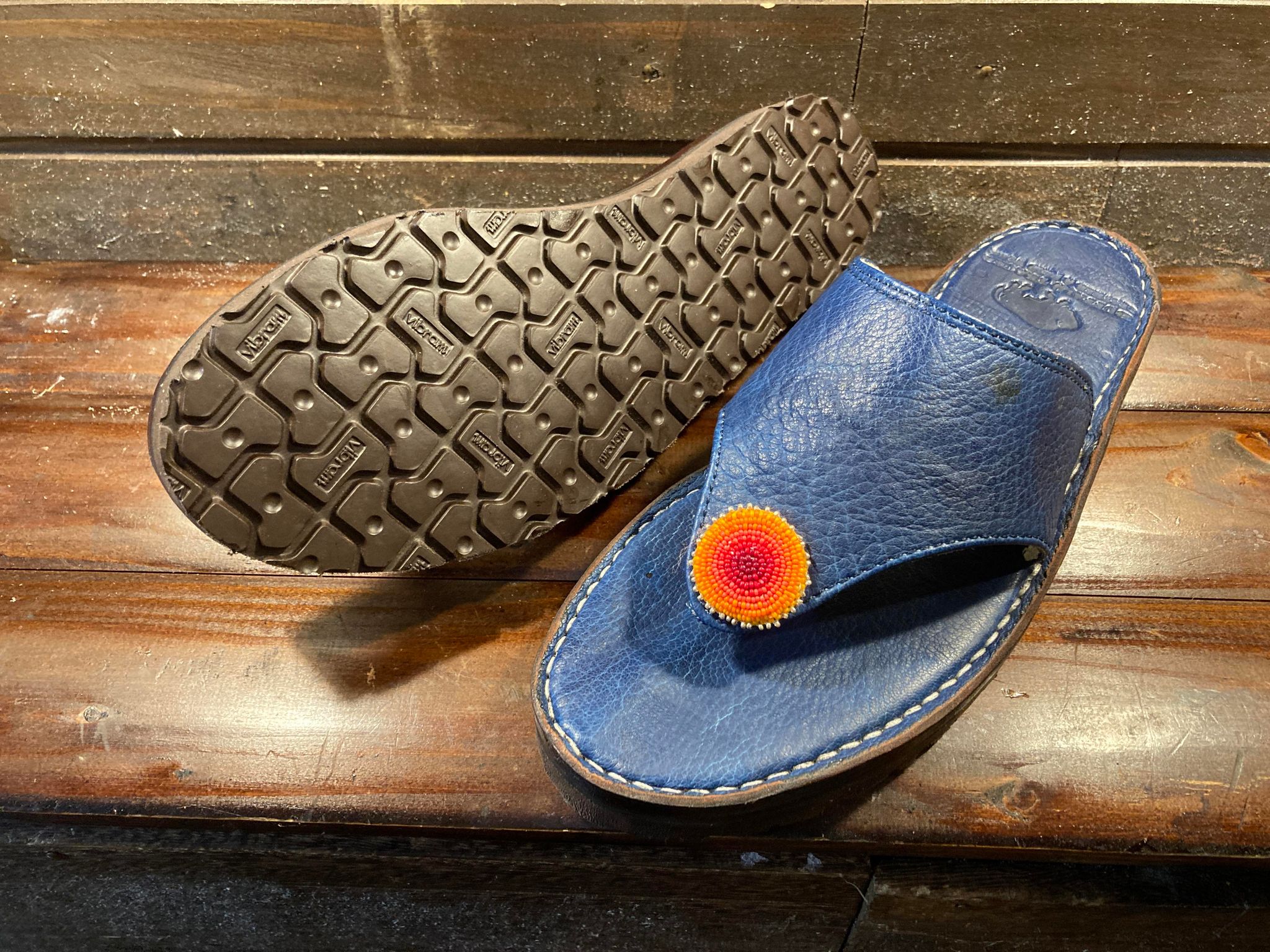
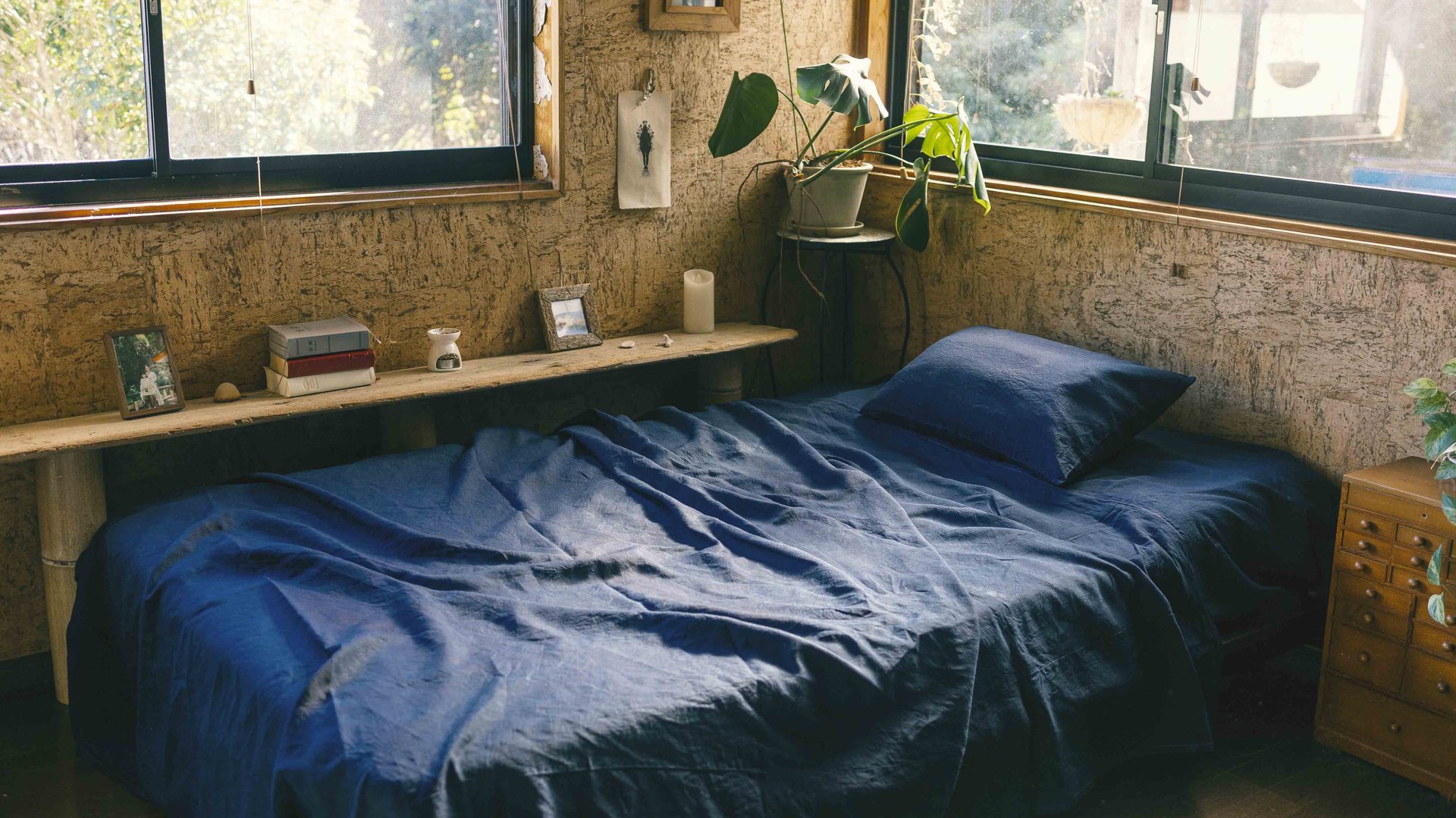
オンラインショップはこちら

Hi-COLOR handworks (ハイカラーハンドワーク)
藍染をはじめとした草木、
泥を使った染色
手仕事をテーマに
一枚一枚丁寧に染めることにより
生地に命を吹き込みます。
